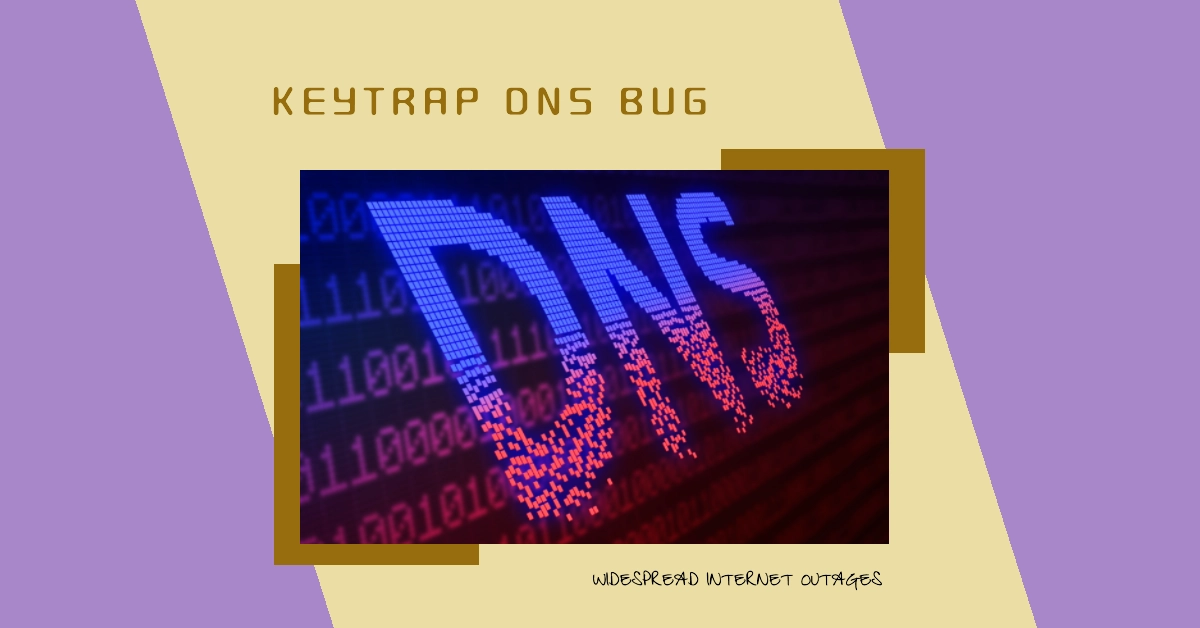A newly discovered vulnerability in the Domain Name System (DNS) has the potential to disrupt internet connectivity on a massive scale. Dubbed “KeyTrap”, this bug could allow attackers to overwhelm DNS servers, causing widespread internet outages and making it difficult, if not impossible, to access essential online services.
DNS is a critical component of internet infrastructure, acting as a phonebook that translates human-friendly website names into the numerical IP addresses computers need for communication.
KeyTrap DNS Bug Overview
The KeyTrap DNS Bug is a serious threat to internet stability. Researchers discovered a fundamental design flaw in a security extension for DNS that’s been around for over two decades.
Exploiting this flaw would enable malicious actors to send a single, specially crafted packet to a DNS server, triggering a resource-intensive loop that would render the server unresponsive.
Considering the central role DNS plays in internet functionality, coordinated attacks against numerous servers could lead to large-scale internet blackouts.
Understanding the KeyTrap DNS Bug
- DNS and DNSSEC: The Domain Name System (DNS) resolves the website names you type into your browser (e.g., www.example.com) into their corresponding IP addresses (e.g., 192.168.1.1). DNSSEC is a security extension that adds a layer of validation to this process, helping protect against certain forms of attacks.
- The Vulnerability: The KeyTrap bug stems from a flaw in how some DNS servers implement DNSSEC. When these servers receive specific types of DNS queries, the flaw can cause them to get stuck in a continuous cycle of calculations. This self-perpetuating process ultimately consumes all of the server’s available resources.
- The Attack: An attacker wishing to exploit KeyTrap needs only to send a single, maliciously designed packet to a vulnerable DNS server. This packet is enough to initiate the resource-draining loop, making the server unresponsive to legitimate requests.
Impact of the KeyTrap Exploit
- DNS Server Downtime: Successful exploitation of the KeyTrap bug could crash DNS servers. When DNS servers go down, websites and services relying on them become unreachable.
- Widespread Outages: Because DNS is hierarchical, taking down certain major DNS servers could have cascading effects, causing widespread internet outages that disrupt everything from online shopping and banking to email and social media.
- Potential for Coordinated Attacks: The simplicity of the KeyTrap exploit makes it particularly worrisome. Attackers with even moderate skill levels could launch highly disruptive attacks targeting multiple DNS servers simultaneously, potentially crippling internet access for large numbers of people.
Mitigation and Protection
- Importance of Patches: Software vendors responsible for affected DNS server implementations are working to release patches that fix this vulnerability. DNS server administrators should install these patches immediately and prioritize them as critical security updates.
- Network Monitoring: Network administrators should remain vigilant and closely monitor DNS traffic for any unusual patterns that might indicate an attempted KeyTrap attack.
- Redundancy and Load Balancing: Organizations should ensure DNS redundancy and load balancing in their infrastructure. This means having multiple DNS servers handling requests to minimize disruptions if any individual server is compromised.
Continuing Importance of DNS Security
The KeyTrap vulnerability highlights the ongoing importance of maintaining strong DNS security. DNS is a crucial, often overlooked, element of the internet. Attacks aimed at this vital infrastructure serve as a reminder that even seemingly mature internet protocols can harbor vulnerabilities waiting to be exploited.
The KeyTrap bug underscores the need for continuous vigilance, proactive patching, and a defense-in-depth strategy to safeguard the networks we rely on.
